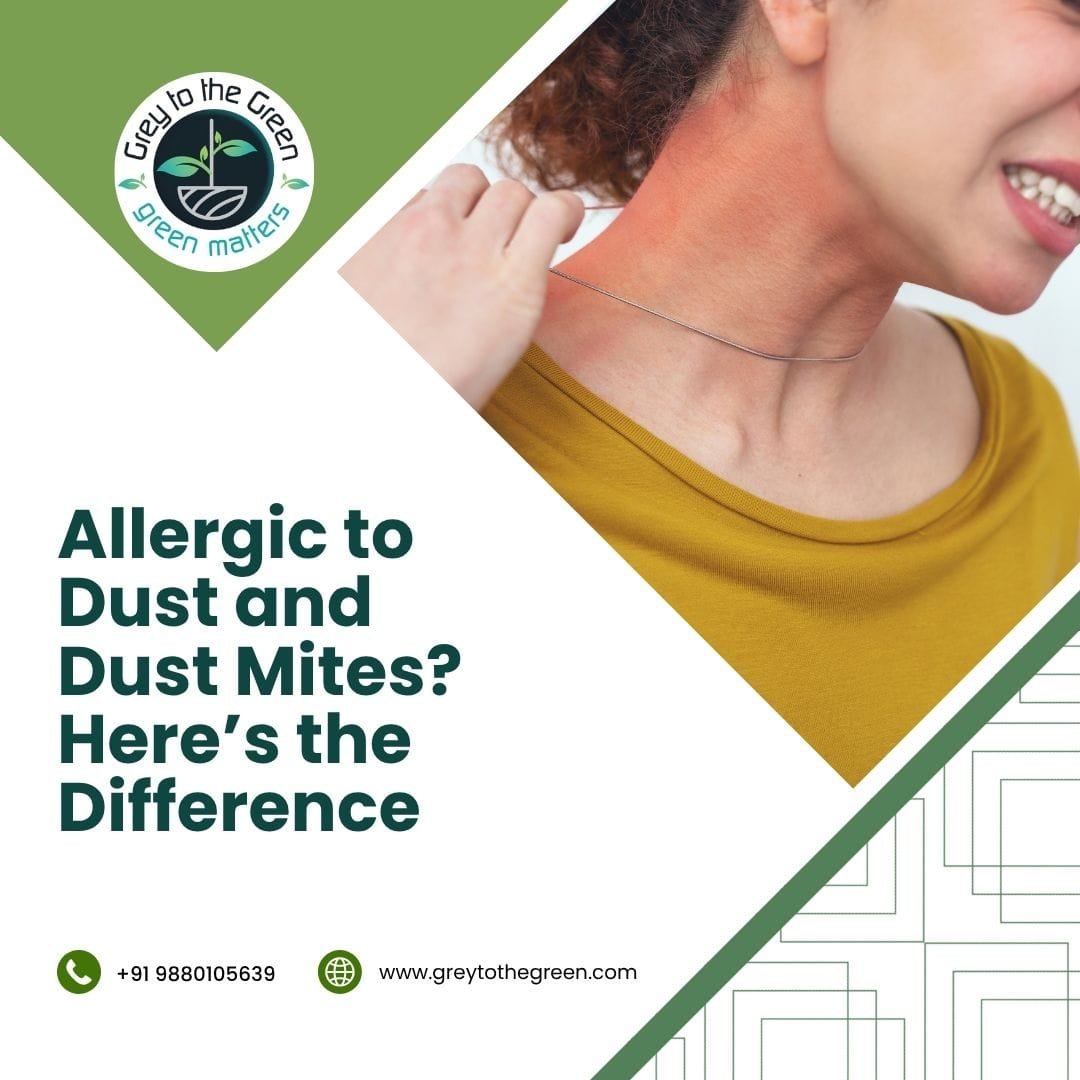What is Dust and Dust Mite?
What is Dust & Dust Mite Allergy and Its Causes?
- In case of dust allergy, the immune system reacts to particles like pollen, mold spores, or even pollutants in the dust.
- For dust mite allergy, the trigger is the protein found in the waste and body parts of dust mites.
- Poor ventilation in homes
- High humidity
- Carpets and rugs that trap dust
- Upholstered furniture
- Stuffed toys and curtains that rarely get washed
The Core Difference: Dust vs Dust Mites
Symptoms of Dust & Dust Mite Allergy
- Runny or blocked nose
- Frequent sneezing
- Watery, itchy, or red eyes
- Persistent coughing or wheezing
- Skin rashes or eczema flare-ups
- Shortness of breath or asthma attacks
- Disturbed sleep due to nasal congestion
How to Manage Dust Mite Allergy
1. Improve Ventilation
2. Wash Bedding Frequently
3. Choose Dust-Resistant Furnishings
4. Vacuum with HEPA Filter
5. Use Allergen-Proof Covers
6. Reduce Clutter
7. Use CheckMite Spray Weekly
✅ Do this 15 minutes before use, so it can settle and act effectively.
✅ It’s a clinically tested, eco-safe, and family-friendly dust mite allergy remedy—ideal for those living in humid, mite-prone environments.
How CheckMite Can Control Dust Mite Allergy?
Neem-Powered Formula
100% Safe & Non-Toxic
Unlike synthetic sprays, CheckMite is made from plant-based ingredients and is safe for children and pets.
Clinically Proven
EU-tested and US-EPA approved, it’s scientifically validated as an effective dust mite allergy remedy.
Easy Application
Just spray on mattresses, pillows, carpets, curtains, and sofas. No rinsing, no wiping. It dries naturally and leaves behind a fresh, natural scent.
Ethical & Sustainable
CheckMite supports tribal communities through sustainable sourcing—making it not just effective, but also socially responsible.
Whether you’re dealing with dust and dust mites in Bangalore, Delhi, or any humid Indian city, CheckMite provides the perfect dust mite cure house approach.
It’s time to stop relying on chemical-heavy treatments and start using a natural dust mite spray that works.
Conclusion
Living with allergies caused by dust and dust mites can be exhausting. From sneezing fits to skin rashes and respiratory distress, the impact on daily life is real. But understanding the difference between dust and dust mites, their unique symptoms, and the correct approach to House mites treatment is half the battle won.
India’s indoor air conditions make it even more important to use targeted solutions. While routine cleaning and ventilation help, true relief comes from products like CheckMite, which offer a natural, eco-safe, and proven dust mite allergy remedy.
Don’t let invisible pests rule your space. Choose a better, healthier life—say goodbye to dust mites with CheckMite!
Frequently Asked Questions (FAQs)
What is the difference between dust and dust mites?
Dust is a mix of particles like skin cells and pollen, while dust mites are microscopic insects living in dust that cause allergic reactions.
What are the symptoms of dust mite allergy?
Common symptoms include sneezing, coughing, blocked nose, watery eyes, skin rashes, and asthma, especially in humid and dusty homes.
How do I treat dust mite allergy naturally?
Natural dust mite allergy remedies include washing bedding in hot water, reducing humidity, using allergen-proof covers, and neem-based sprays like CheckMite.
Where do dust mites commonly live in the house?
Dust mites thrive in beds, pillows, carpets, curtains, upholstered furniture, and stuffed toys—any place warm, humid, and filled with fabric.
Is CheckMite safe for children and pets?
Yes, CheckMite is a plant-based, non-toxic, and clinically tested dust mite spray safe for use around children, pets, and allergy-prone individuals.
How often should I use CheckMite spray?
For effective results, spray CheckMite 4 to 6 times per week on beds, sofas, curtains, and carpets—15 minutes before using those surfaces.
Can I completely eliminate dust mites from my home?
You can’t remove them completely, but regular cleaning, controlling humidity, and using targeted treatments like CheckMite greatly reduce their impact.



